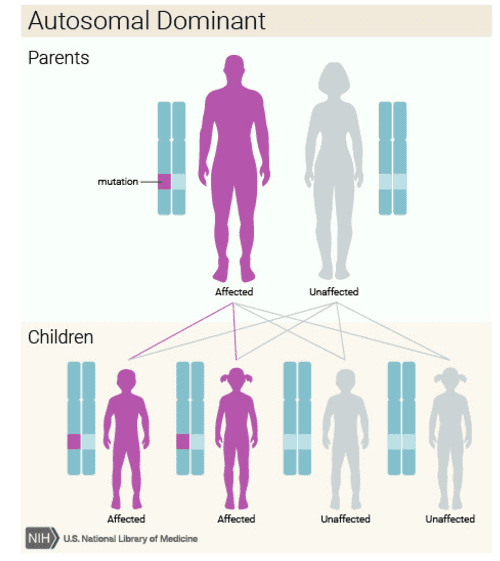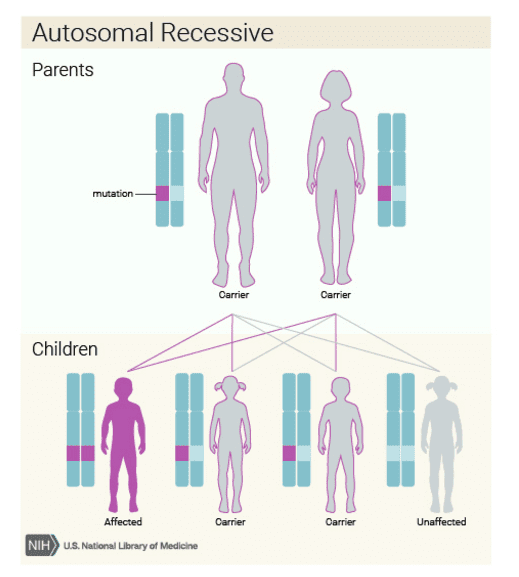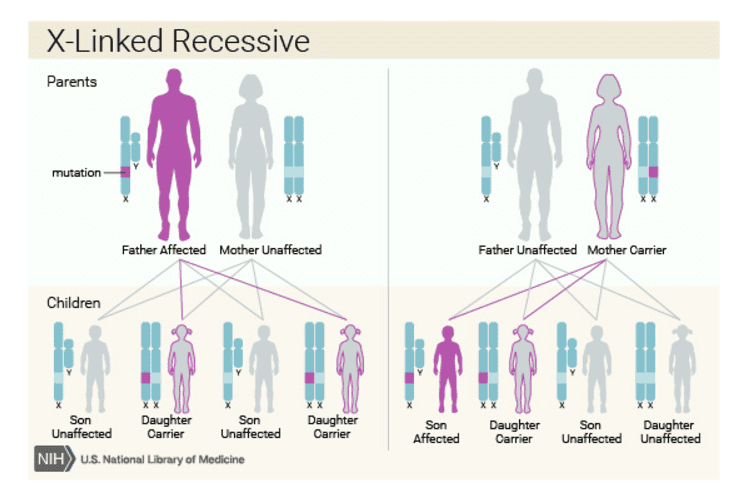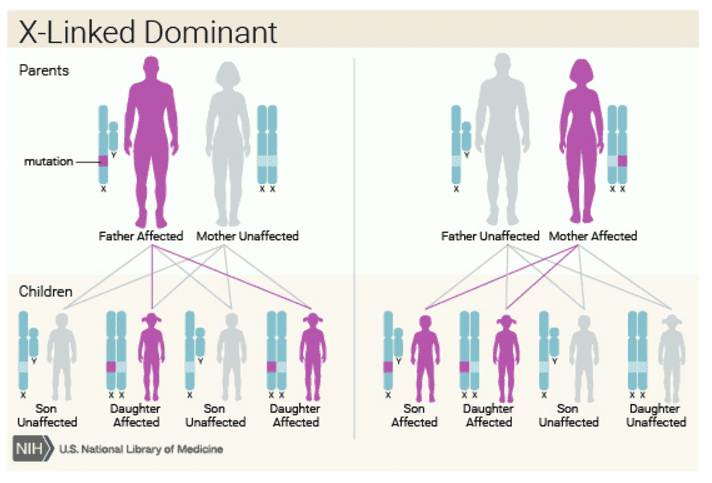Only one copy of a gene has a mutation/change in each cell that leads to a genetic condition. There is a 50% risk to pass on the condition to your children and typically each affected person has one affected parent.

Both copies of a gene has a mutation/change for an individual to be affected with the genetic condition. Parents are usually unaffected but each “carry” a mutation in one of their two copies of the gene. If both parents are carriers of the same genetic condition, there is a 1 in 4 or 25% chance to have an affected child.

A mutation/change is located on the X chromosome. Typically, only males are affected if they have the mutation since they have only one x-chromosome. Females with the mutation are typically unaffected because they have two x-chromosomes, but are considered “carriers”. If a woman is a carrier for an X-linked condition, there is a 50% chance to her son to be affected, and a 50% chance for her daughters to be carriers. If a male is affected then ALL his daughters will be carriers and ALL of his sons will be healthy and not carriers.
Rarely, females can inherit an X-linked recessive disorder. If both parents are affected, ALL of their children will be affected. If the father is affected and the mother is a carrier, 50% of their children will be affected (boys or girls), while the other 50% will be healthy boys or carrier girls.

Similar to X-linked recessive, a mutation/change is located on the X chromosome. However, with X-linked dominant mutations, you only need one mutation to be affected. Both males and females can be affected, although males may be more severely affected or may not survive. When a female is affected, each pregnancy will have a 50% chance for offspring to inherit the disease allele. When a male is affected, all his daughters will be affected, but none of his sons will be affected.


